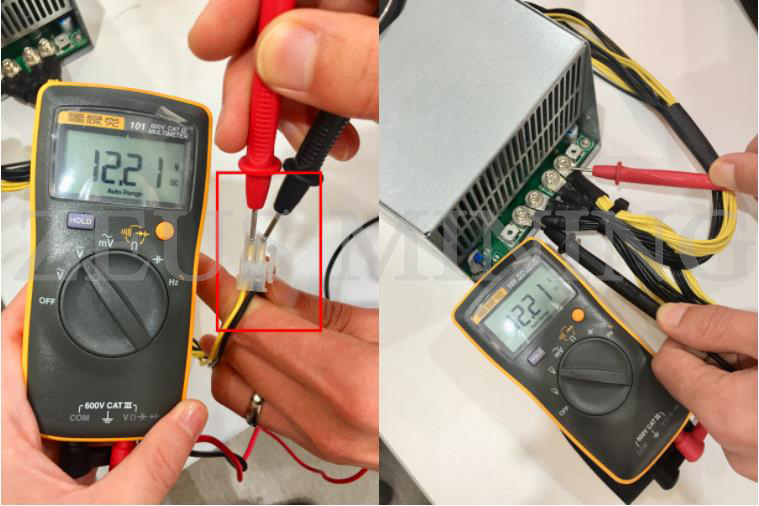ASIC Miner ICERIVER KAS KS0 Profitability In the realm of cryptocurrency mining, the Iceriver KAS KS0 miner has garnered widespread attention. Tailored specifically for the Kaspa network's KHeavyHash algorithm, it boasts high hashing power and low power consumption, making it an ideal choice for many miners. In this article, we will comprehensively assess IceRiver KS0 profitability while considering the Kaspa market conditions and the attributes of KS0 miner. Kaspa Market Dynamics Kaspa is a vibrant cryptocurrency network aimed at delivering high performance and scalability for everyday transactions. At the time of writing this article, the Kaspa coin trades at approximately $0.04959. But it's essential to note that cryptocurrency markets are highly susceptible to price volatility. Hence, investors must remain vigilant about market dynamics. Additionally, the Kaspa network's mining difficulty and reward mechanisms play a role in mining returns. Attributes of the IceRiver KS...
How to use the fluke multimeter to test the IC chip failure?
This article will introduce five methods for measuring faulty IC chips with a multimeter, and you can check them one by one.
I. Offline detection
Measure the positive and negative resistance values between each pin of the IC chip and the ground. Compare this with a good IC chip to find the point of failure.
II. Online detection
1. Detection method of DC resistance
Same as offline detection. But beware:
a. Disconnect the power supply on the circuit board to be tested;
b. The internal voltage of the multimeter shall not be greater than 6V;
c. When measuring, pay attention to the influence of the periphery. Such as electronic components connected to IC chips.
2. Measurement of DC working voltage
The measured DC voltage of each pin of the IC chip can be compared with the normal value. But also note:
a. The multimeter must have a large enough internal resistance, and the digital multimeter is the first choice;
b. Each potentiometer is rotated to the middle position;
c. The test pen or probe should take anti-skid measures, and the pen tip should grow about 5mm;
d. When the measured value does not match the normal value, the voltage of the pin should be used to analyze whether the normal value of the IC chip is affected and the corresponding changes of other pin voltages;
e. IC chip pin voltage will be affected by peripheral components. Such as leakage, short circuit, open circuit, or deterioration;
f. When some pins of the IC chip are abnormal, start with the most significant deviation. Check the peripheral components first; if there is no fault, the IC chip is damaged;
g. For circuit boards with dynamic signals during operation, the IC chip pin voltages with or without signals are different. But if the change is abnormal, the IC chip may be damaged;
h. For equipment with multiple working modes, the voltage of the IC pin is different in different working modes.
For the specific operation of the multimeter voltage test, please refer to the article How to use a multimeter to test the power supply? to learn more.
3. AC working voltage test method
Use a multimeter with a dB range to measure the approximate value of the AC voltage on the IC. If there is no dB range, a 0.1-0.5μF isolation DC capacitor can be connected in series with the positive test lead. This measurement method is suitable for IC components with relatively low voltages. But be aware that natural frequencies will affect these signals, and the waveforms will vary. Therefore, the measured data are approximate and are for reference only.
4. Total current measurement method
By measuring the total current of the IC power supply, to judge the quality of the IC. Since most of the ICs are DC coupled, when the IC is damaged (such as PN junction breakdown or open circuit), it will cause the saturation and cut-off of the later stage, which will change the total current. So measuring the total current can judge the quality of the IC. The current value can be calculated by measuring the voltage on the loop resistance online.
As an instrument that integrates various standard electrical measurement functions, a Fluke multimeter has three essential test items: voltage, current, and resistance. In addition, many multimeters now have automatic range selection and extended functions such as measuring capacitance, inductance, frequency, duty cycle, temperature, and triode magnification.
So which fluke multimeter to buy?
The purchase of a multimeter should be comprehensively considered from several aspects such as product performance, brand, appearance, after-sales service, and price.
The performance of the multimeter mainly includes five aspects: measurement accuracy, extended functions, reliability, durability, and product safety features.
The multimeter's accuracy includes two aspects: one is the measurement accuracy, which is usually called "error"; the other is the measurement resolution, which is usually called "display digits."
Comparison of Fluke Multimeter 15B+ and 17B+:
Features | Fluke 15B+ | Fluke 17B+ |
Display digits | 4000 digits | 4000 digits |
AC and DC voltage range | 1000V | 1000V |
AC millivolt range | 400mV | 400mV |
DC millivolt range | 400mV | 400mV |
AC and DC mA range | 400mA | 400mA |
AC and DC range | 10A | 10A |
AC and DC microamp range | 4000μA | 4000μA |
Diode measurement | 2.000V | 2.000V |
Resistance range | 40MQ | 40MQ |
Capacitance range | 1000μF | 1000μF |
On and off the buzzer | OK | OK |
Frequency and Duty Cycle | Can't measure frequency | OK |
Temperature measurement (subject to the probe) | NO | OK |
LED Light Emitting Diode | NO | NO |
Automatic shut-down | OK | OK |
Each of the above detection methods has advantages and disadvantages. Therefore, it is best to combine these methods in practical applications.


Comments
Post a Comment
Tell us your opinion